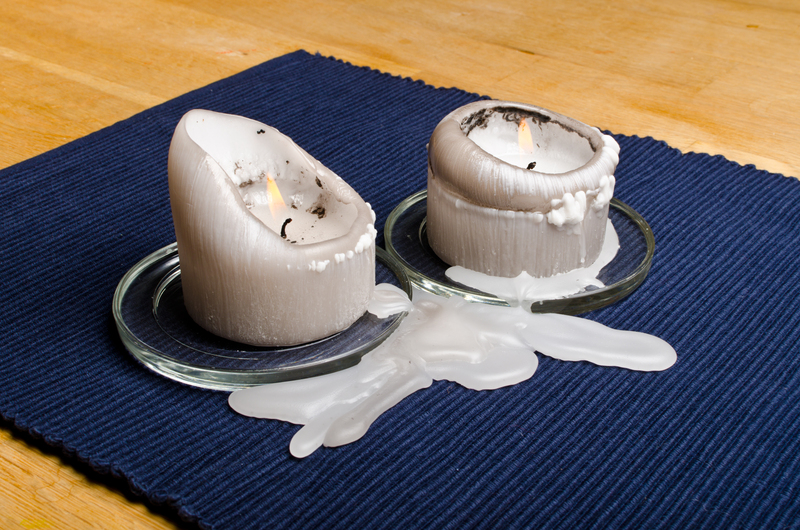Comprehensive Guide to Removing Damp Smell Effectively
Posted on 31/08/2025
Comprehensive Guide to Removing Damp Smell Effectively
Damp smells, often described as musty, unpleasant, or stale, are a common nuisance in many homes and buildings. Not only can a persistent damp odor be off-putting, but it also signals underlying moisture problems that can lead to bigger issues such as mold and mildew growth. If you're exploring thorough ways to remove damp smells once and for all, this comprehensive guide provides expert insights, actionable tips, and preventive strategies for a fresh, odor-free living space.
Understanding Damp Smell: Causes and Risks
What Causes Damp Odors?
The classic damp smell emerges when moisture accumulates in indoor spaces, creating the perfect environment for mold and mildew to flourish. Here are some of the most common culprits:
- Leaky pipes or roofs: Hidden water can seep into walls and floors, remaining unnoticed for long periods.
- Poor ventilation: Inadequate airflow in basements, bathrooms, or laundry rooms prevents surfaces from drying properly.
- Rising damp: Moisture from the ground is absorbed into masonry, especially in older buildings without modern damp-proof courses.
- Condensation: Frequent temperature changes lead to water droplets forming on cool surfaces, resulting eventually in a musty smell.
- Flooding or spills: Any substantial water exposure that isn't dried quickly can develop persistent odors.
Health and Structural Risks of Ignoring Damp Smells
Not only is the musty, damp odor unpleasant, but it can also be a health hazard. Prolonged exposure to damp conditions can trigger allergies, asthma, and respiratory issues--especially for sensitive individuals. Furthermore, unchecked moisture accelerates the deterioration of wooden structures, plaster, insulation, and furnishings.

How to Remove Damp Smell Effectively: Step-by-Step Solutions
1. Identify the Source of Moisture
The first and most important step in eliminating damp odors is finding and addressing the root of the problem. If you remove the smell without fixing the source, it will inevitably return.
- Inspect hidden areas: Look behind furniture, under carpets, in closets, and within walls if possible.
- Check plumbing: Examine pipes and joints for leaks or signs of water damage.
- Assess ventilation: Ensure rooms--especially bathrooms and kitchens--are getting adequate airflow.
- Look for visible mold or mildew: These usually accompany persistent strong musty smells.
2. Dry Out the Affected Area
Once the source is identified, it's essential to eliminate existing moisture to stop the cycle of musty smell formation.
- Open windows and doors to promote cross-ventilation and speed up drying.
- Use fans or space heaters to increase air movement and warmth, which hastens evaporation.
- Deploy a dehumidifier: This is one of the most effective tools for removing damp air in basements and closed rooms.
- Remove and launder affected textiles: Wash curtains, rugs, and upholstery.
- If flooding occurred, hire professionals for thorough drying and assessment.
3. Clean and Disinfect Problem Areas
Lingering damp odors often cling to surfaces, especially porous materials. Here's how to deep-clean and neutralize these smells:
- For hard surfaces: Mix equal parts vinegar and water, spray, and wipe down walls, floors, and tiles.
- For fabrics: Use baking soda or specialized odor-removing sprays. Wash with hot water if safe for the material.
- For carpets: Sprinkle with baking soda, leave for several hours, then vacuum thoroughly.
- For mold: Clean with a mixture of bleach and water (1 cup bleach to 1 gallon water)--always wear gloves and ventilate well.
*Tip: Always test cleaning solutions on a small, inconspicuous spot first to prevent damage.*
4. Use Natural Odor Neutralizers
After cleaning, you may still notice a faint musty odor. Neutralize these naturally:
- Baking soda: Place open containers in corners or affected areas to absorb lingering smells.
- Activated charcoal: Set bowls near persistent odor sources for powerful absorption.
- Vinegar: Leave open bowls in musty rooms overnight (don't worry, the vinegar smell fades quickly).
- Coffee grounds: Fresh or used coffee grounds in breathable bags can mask and absorb odors.
5. Improve Ventilation and Humidity Control
Prevention is key to keeping damp smells away for good. Ensure your environment stays dry and airy long-term by:
- Installing exhaust fans: In high-humidity areas like showers and laundry rooms.
- Opening windows regularly: For natural airflow and sunlight exposure.
- Using a dehumidifier: Especially during wet seasons or for chronically damp spaces.
- Fixing leaks promptly: Don't ignore any signs of water intrusion, no matter how small.
- Sealing basements and crawlspaces: Use vapor barriers and sealant to prevent ground moisture.
Additional Solutions for Persistent Damp and Musty Odors
Deep Cleaning and Restoration Services
If, after trying the above methods, the damp smell persists or you've uncovered extensive mold growth, it may be time to call professionals. Restoration services have industrial-grade equipment for drying, dehumidifying, and treating mold that might not be visible to the naked eye.
- Mold remediation: Experts can safely remove severe infestations and prevent spread.
- Thermal imaging: Detects hidden water leaks within walls.
- Odor neutralization: Ozone generators and foggers to eliminate stubborn smells.
Do not ignore chronic damp problems, as the damage will only escalate with time!
Smart Home Solutions
Modern technology can help keep your home fresh and dry.
- Humidity sensors: Alert you when humidity gets too high, allowing early intervention.
- Smart dehumidifiers: Automatically maintain ideal humidity levels and send alerts to your phone.
- Automated exhaust systems: Timed switches or humidity-sensor fans for bathrooms and attics.
Preventing Damp Smells: Long-Term Maintenance Tips
Regular maintenance is essential to stop damp and musty odors before they start. Follow these tips to protect your home and health:
- Inspect your roof, gutters, and downspouts yearly to ensure water flows away from your foundation.
- Seal windows and doors to prevent leaks and drafts that can cause condensation.
- Check for plumbing leaks or sweat on pipes, especially in cooler areas like basements.
- Maintain exterior walls and caulking for extra resistance to rain and humidity.
- Store items off the floor in basements and garages to promote airflow and avoid trapping moisture.
- Regularly clean and vacuum to prevent dust and allergens from combining with dampness for that classic musty house smell.

Frequently Asked Questions About Removing Damp Smells
Can I remove damp smell without addressing the source of moisture?
No. Any temporary solutions (air fresheners, surface cleaning) will fail if the underlying moisture persists. Always locate and fix the real cause to eliminate damp odors permanently.
What is the fastest way to get rid of mildew smell in a room?
For quick results, combine ventilation (open windows, use fans), use baking soda or charcoal, and clean hard surfaces with vinegar or specialized mildew removers. For textiles, wash and sun-dry whenever possible.
Is it safe to use bleach to clean mold caused by dampness?
Bleach is effective on non-porous surfaces but less so on fabrics or drywall. For severe mold issues, professional remediation is safest.
How does a dehumidifier help eliminate musty odors?
By lowering the humidity, dehumidifiers make it harder for mold and bacteria to grow, which in turn prevents musty smells from developing.
Can scented candles or sprays cover up a damp smell?
They might temporarily mask the odor, but won't solve the root moisture issue. Persistent underlying dampness will always overpower added fragrances.
Conclusion: Enjoy a Fresh, Odor-Free Home
Eliminating a damp smell requires more than just short-term fixes--it demands identification of the source, thorough cleaning, effective drying, and long-term prevention. By following this comprehensive guide, you can ensure your home remains clean, healthy, and inviting. Remember, if the problem appears unmanageable or is linked to structural leaks, don't hesitate to seek professional help to protect both your investment and well-being.
Take action today to remove that musty odor and enjoy a truly fresh living space!



